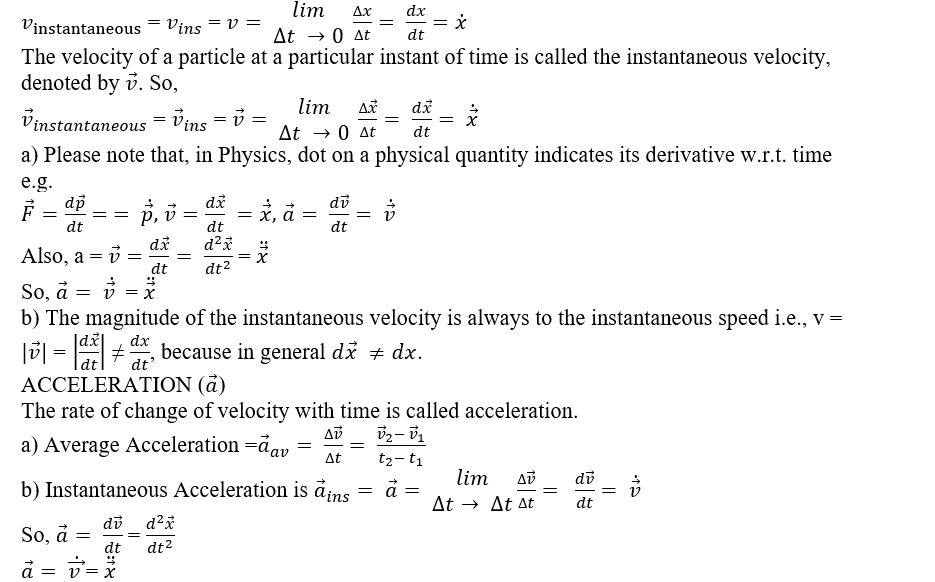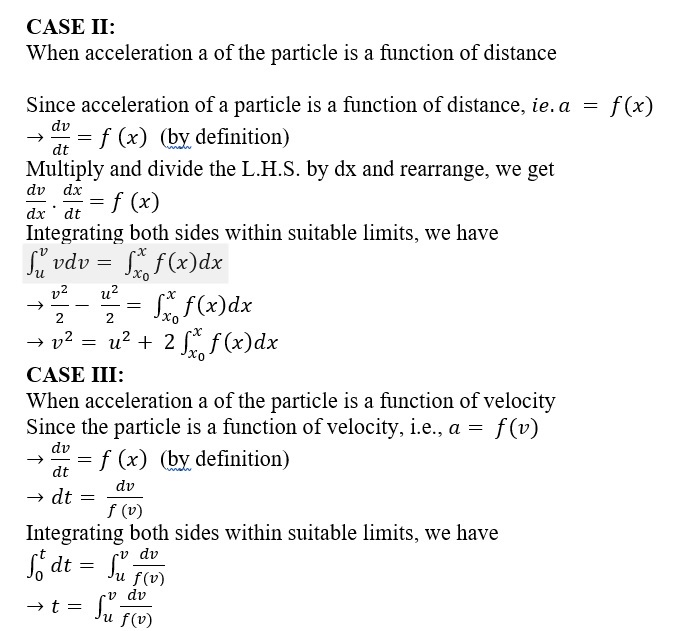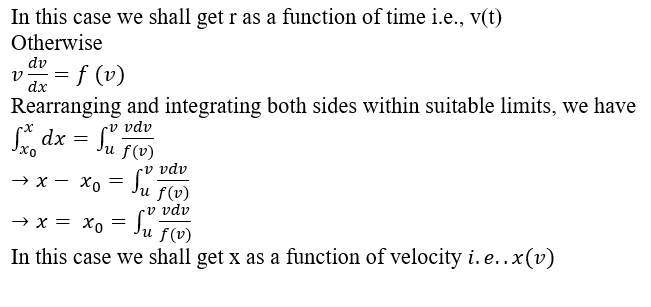DOWNLOAD MOBILE APPLICATION TO LEARN MORE: MOTION IN ONE DIMENSION CLASS 11

DOWNLOAD MOBILE APPLICATION TO LEARN MORE: MOTION IN ONE DIMENSION CLASS 11
In our study of translational motion, we shall be using the concept of Point Object also called as the Particle Model. A body is considered as a point object depending upon the nature of the motion followed by the body. In general, an object is regarded a point-object when it travels large distances in comparison to its own size and dimensions.
Also, in planetary motion, the bodies under consideration can be regarded as point objects when distances of separation are very large
EXAMPLE
The planets revolving around this sun may be considered as point objects.
CONCEPT OF REFERENCE FRAME
A reference frame is a platform from where a physical phenomena, such as motion, is being observed. Reference frames are mainly of two types
a) Inertial (Non-Accelerated frames)
b) Non-Inertial (Accelerated frames)
The detailed discussion about both these frames follows in the next chapter. As of now, for this chapter, the reference frame is a frame (fixed or moving with constant velocity) i.e., non accelerating frame. The best convenient reference frame for this chapter would be the Ground Frame. Please note here, that I said “the best convenient” which has t convenience, but not accuracy attached to it. For practical purposes, we regard earth as an inertial frame (though it is accelerating), hence I said convenient and not accurate.
STATE OF REST AND MOTION
A particle is said to be in the state of rest when it does not change its position w.rt. surroundings with the passage of time.
A particle is said to be in the state of motion when it changes its position w.r.t. surroundings with the passage of time. Rest and Motion, these two terms are not absolute Le complete in themselves. These terms are relative terms i.e. a body can be in the state of rest and motion simultaneously, depending upon the relative observer viewing motion.
EXAMPLE
Four persons sitting in the moving car are at rest w.r.t. an observer sitting in the car, whereas the same four persons are in motion w.r.t. a stationary observer viewing them from the ground.
AVERAGE SPEED AND AVERAGE VELOCITY

INSTANTANEOUS SPEED AND INSTANTANEOUS VELOCITY

EQUATIONS OF MOTION FOR VARIABLE ACCELERATION
CASE 1:
When acceleration a of the particle is a function of time
Since acceleration of a particle is a function of time, i.e..

DOWNLOAD MOBILE APPLICATION TO LEARN MORE: MOTION IN ONE DIMENSION CLASS 11
Table of Contents
MOTION IN ONE DIMENSION CLASS 11


1. A car runs at a constant speed on a circular track of radius 100 m, taking 62.8 seconds for every circular lap. The average velocity and average speed for each circular lap respectively is
(a) 10 m/s, 0
(b) 0,0
(c) 0, 10 m/s
(d) 10 m/s ,10 m/s
Answer: C
2. If the velocity of a particle is v = At + Bt2 , where A and B are constants, then the distance travelled by it between 1 s and 2 s is

3. A particle shows distance – time curve given in this figure. The maximum instantaneous velocity of the particle is around the point
(a) D
(b) A
(c) B
(d) C
Answer: D


5. Motion of a particle is given by equation s = (3t3 + 7t2 +14t + 8) m. The value of acceleration of the particle at t = 1 sec is
(a) 10 m/s2
(b) 32 m/s2
(c) 23 m/s2
(d) 16 m/s2
Answer: B
DOWNLOAD MOBILE APPLICATION TO LEARN MORE: MOTION IN ONE DIMENSION CLASS 11
6. The displacement-time graph of a moving particle is shown below. The instantaneous velocity of the particle is negative at the point
(a) E
(b) F
(c) C
(d) D

Answer: A
7. Which of the following curve does not represent motion in one dimension?


Answer: B
8. A stone falls freely under gravity. It covers distances h1, h2 and h3 in the first 5 seconds, the next 5 seconds and the next 5 seconds respectively. The relation between h1,h2,h3 is

9. A ball is dropped from a high rise platform at t = 0 starting from rest. After 6 seconds another ball is thrown downwards from the same platform with a speed v. The two balls meet at t = 18 s. What is the value of v ? (Take g = 10 m/s2)
(a) 75 m/s (b) 55 m/s (c) 40 m/s (d) 60 m/s
Answer: A
10. A particle starts its motion from rest under the action of a constant force. If the distance covered in first 10 seconds is S1 and that covered in the first 20 seconds is S2, then
(a) S2 = 3S1 (b) S2 = 4S1
(c) S2 = S1 (d) S2 = 2S1
Answer: B
DOWNLOAD MOBILE APPLICATION TO LEARN MORE: MOTION IN ONE DIMENSION CLASS 11
